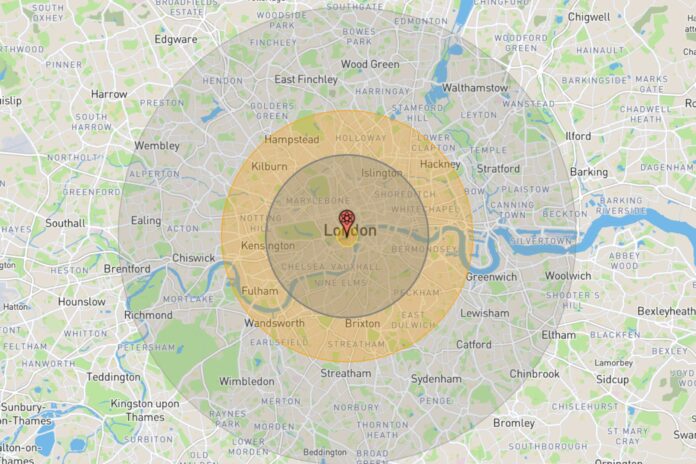The Department of Defense (DoD) has revealed it is working on a new range of nuclear bombs, called the B61-13, to “strengthen deterrence of adversaries and assurance of allies” by upgrading part of the aging U.S. nuclear stockpile.
These weapons will be a new variant of the B61 gravity bomb, first produced in the 1960s during the Cold War, an unguided system designed to destroy its target after being dropped from an airplane. In a press release sent out on October 27, the DoD said the new weapons will “assure our ability to achieve deterrence and other objectives” whilst having the “modern safety, security, and accuracy features” of the B61-12, a variant introduced under the Obama administration.
Officials said the B61-13 will have roughly the same yield as the B61-7, an older variant, about 600 of which were produced and some of which remain in the U.S. stockpile. Each B61-7 warhead has a yield equivalent to 340 kilotons of TNT, giving it about 23 times the explosive power of the nuclear bomb dropped on Hiroshima, Japan, at the end of World War II killing between 70,000 and 140,000 people, according to an estimate by The Bulletin of the Atomic Scientists.
Fears of nuclear conflict surged following the Russian invasion of Ukraine in February 2022, since when Moscow has issued frequent nuclear warnings in response to Western support for Kyiv. Nikolai Patrushev, secretary of Russia’s Security Council and a close ally of President Vladimir Putin, boasted about Russia’s nuclear arsenal during the Znanie (Knowledge) education expo in Moscow. He said: “For the first time in the history of the existence of nuclear missile weapons, our country is ahead of its competitors in this [nuclear] domain.”
Modeling produced by Professor Alex Wellerstein, an expert in nuclear technology at the Stevens Institute of Technology in Hoboken, New Jersey, estimate what would happen if the B61-7 were dropped on major cities, the impact of which should be comparable to the B61-13.
For each explosion his model, called the “nuke map,” produces four tiers of damage, with the level of destruction and casualties declining the further you get from the nuclear airburst.
Anything inside the yellow area, at the center of the blast, “is effectively vaporized.” The second grey tier shows the moderate blast damage radius, where “most residential buildings collapse, injuries are universal, fatalities are widespread.” The third area, in orange, shows where there is an “100% probability for 3rd degree burns” which “can cause severe scarring or disablement, and can require amputation.”
Finally the fainter grey circle shows the light blast damage radius, where “glass windows can be expected to break” causing “many injuries in a surrounding population.”
Newsweek used the model to calculate what would happen if a B61-7 were dropped on major European cities.
London
OPENSTREETMAP/MAPBOX/NUKEMAP/ALEX WELLERSTEIN
The bomb exploding near the Houses of Parliament would vaporize much of Westminster, the political heart of London, whilst causing serious damage in a region ranging from Islington in the north to Brixton, south of the Thames. The model estimates this would leave 552,160 dead and another 1,602,410 injured.
Paris
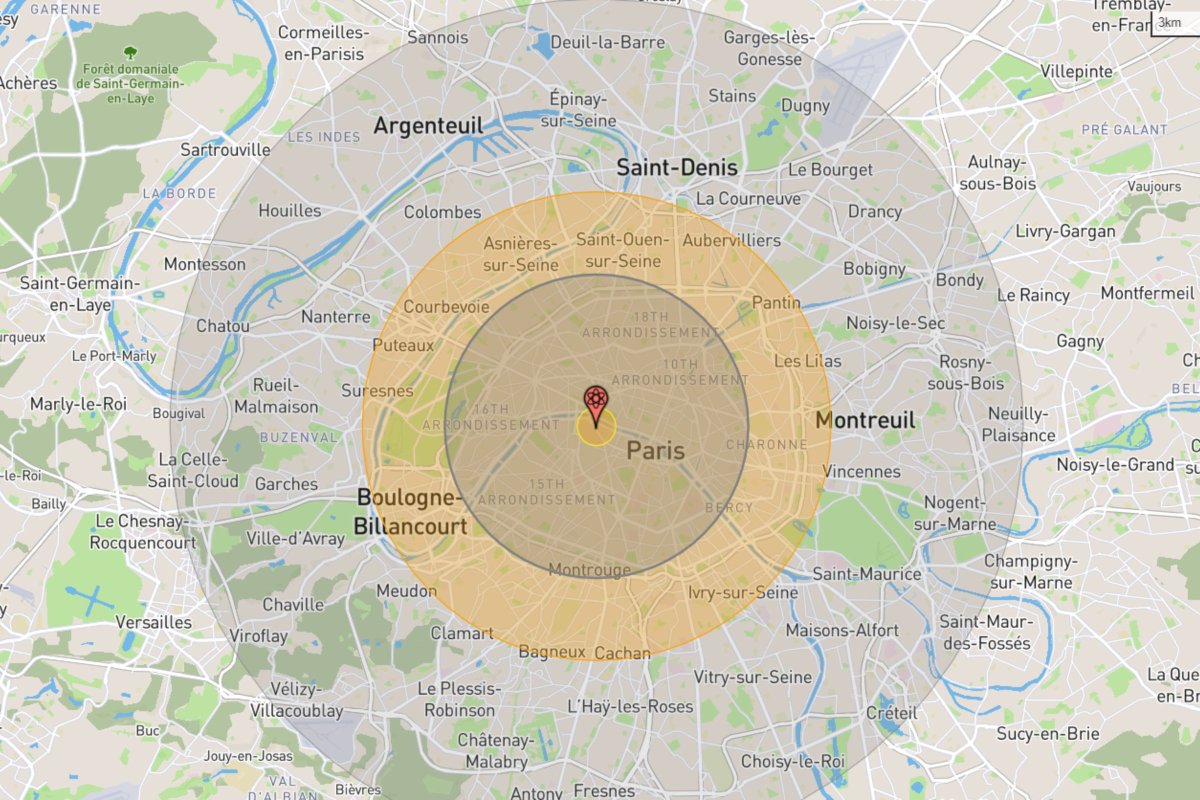
OPENSTREETMAP/MAPBOX/NUKEMAP/ALEX WELLERSTEIN
If the bomb was instead dropped on densely populated central Paris it would kill around 1,102,180, more than any other European city modeled, whilst leaving 1,602,410 injured. Thirddegree burns would be recorded all the way from Suresnes in the west to Charonne in the east, whilst central areas would be obliterated.
Berlin
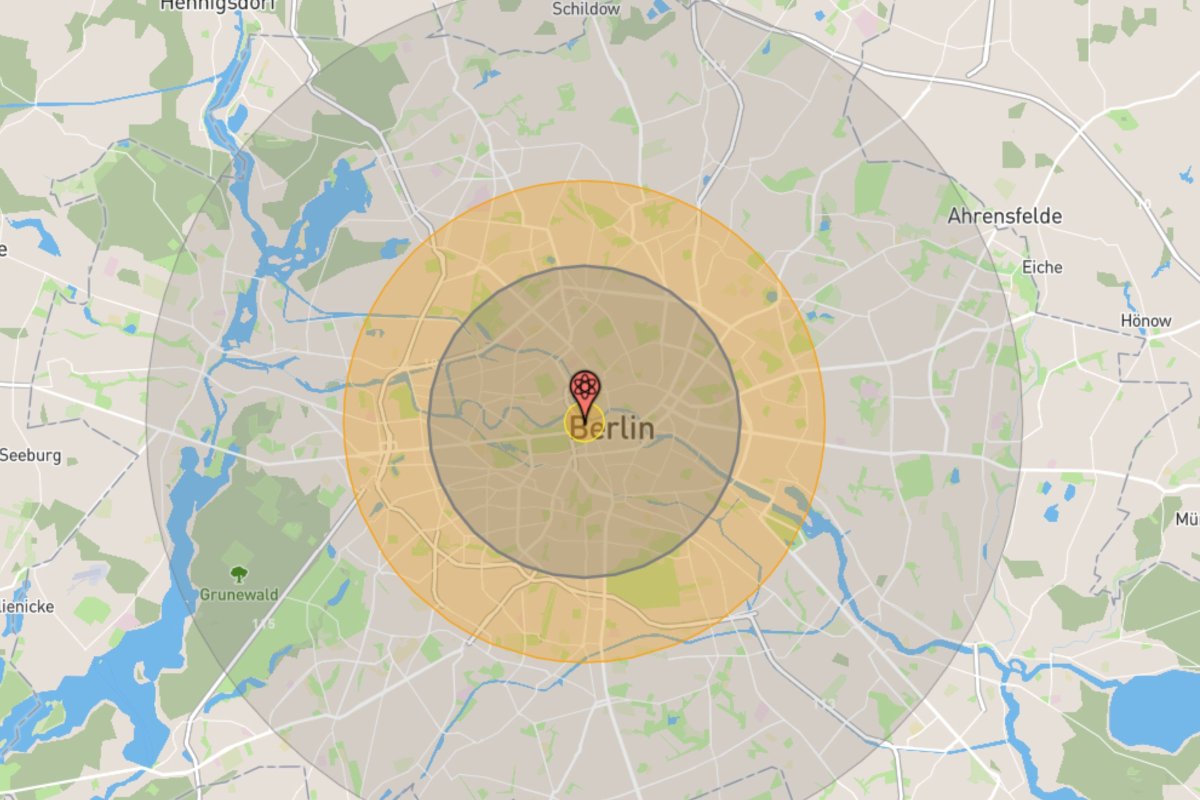
OPENSTREETMAP/MAPBOX/NUKEMAP/ALEX WELLERSTEIN
For Berlin, the bomb would leave around 379,760 dead, with another 1,027,550 injured, and much of the historic heart of the city reduced to rubble. Third-degree burns should be expected from the Niederschonhausen district in the north to Tempelhof in the south, whilst more central areas like Kreuzberg and Moabit would suffer serious damage.
Kyiv
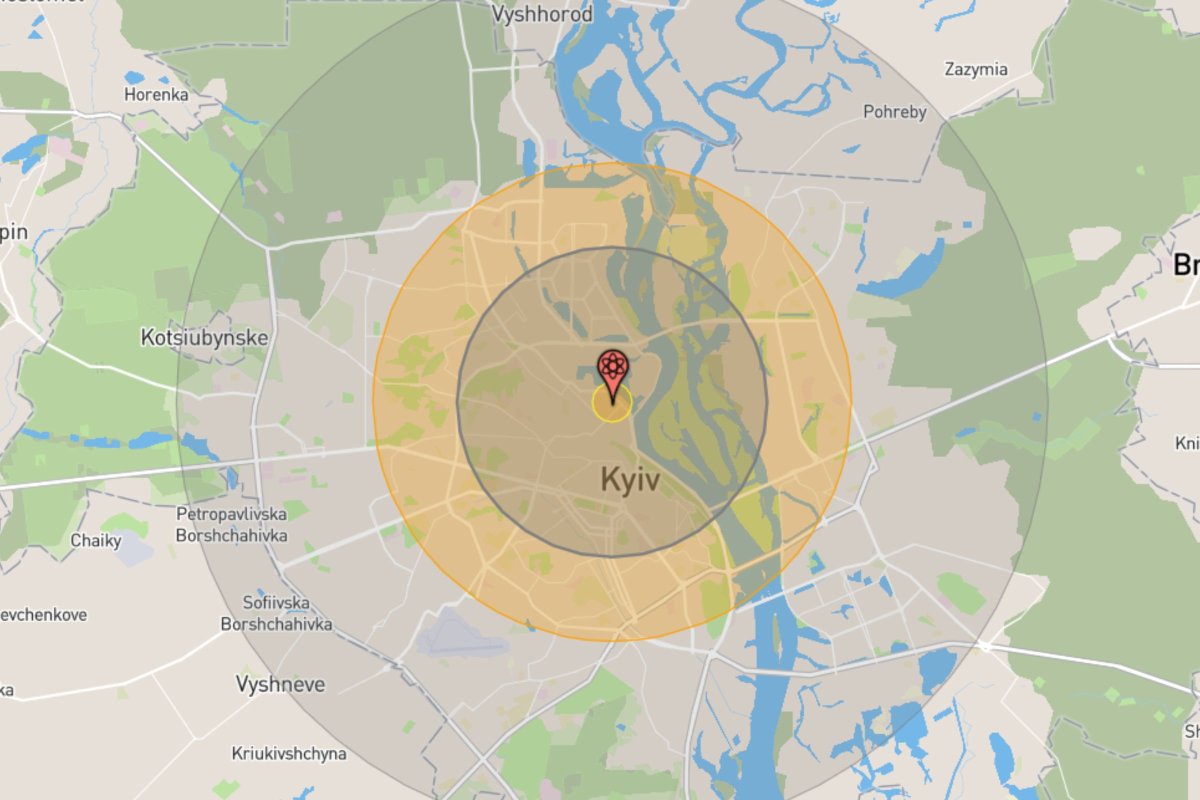
OPENSTREETMAP/MAPBOX/NUKEMAP/ALEX WELLERSTEIN
If the B61-7 exploded above the government district of Kyiv, which Russian troops failed to capture in February and March 2022, around 283,220 people would be killed and another 881,250 injured. The Solomianka, Zvirynets and Klov districts would be devastated, with third-degree burns and shattered windows recorded much further out.
Moscow
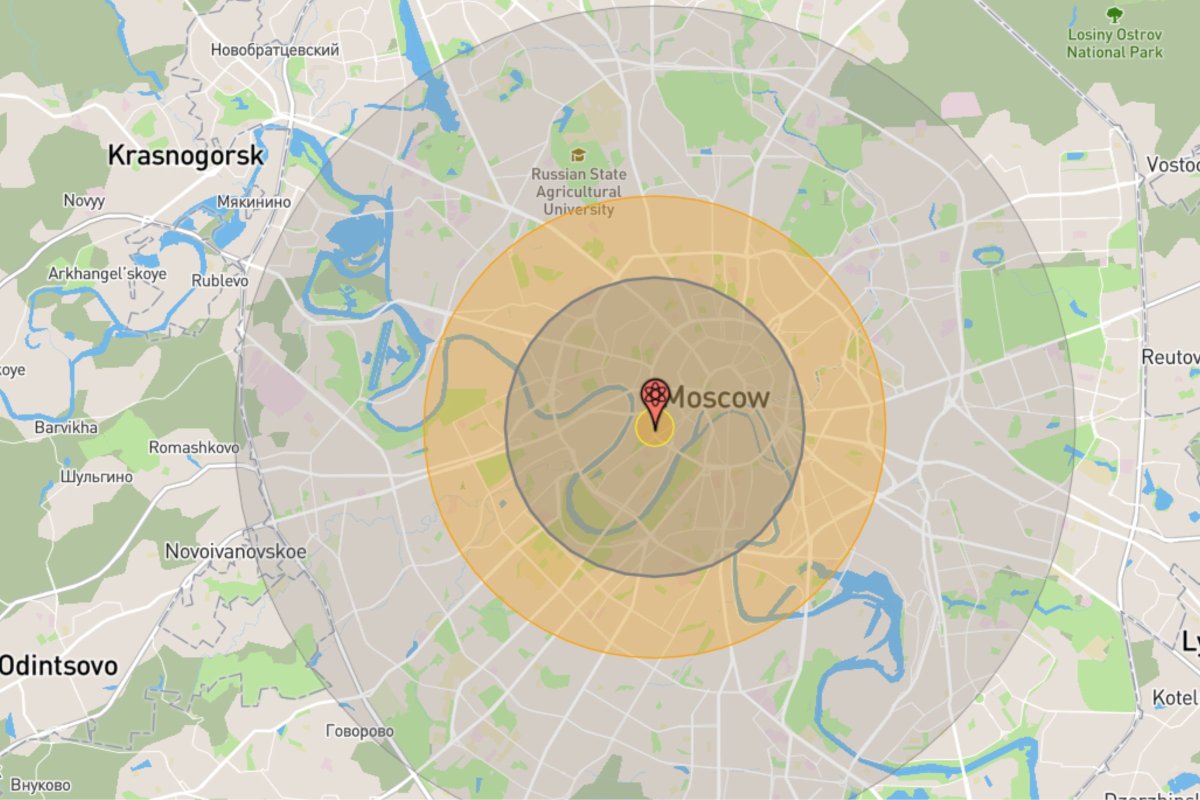
OPENSTREETMAP/MAPBOX/NUKEMAP/ALEX WELLERSTEIN
Dropping the B61-7 over Moscow would kill around 583,920 people, whilst leaving another 2,270,680 injured. If dropped over the Kremlin, the heart of the Russian government would be leveled, with serious damage extending from the Danilovsky district in the south to the Maryina Roshcha district in the north.
Uncommon Knowledge
Newsweek is committed to challenging conventional wisdom and finding connections in the search for common ground.
Newsweek is committed to challenging conventional wisdom and finding connections in the search for common ground.


